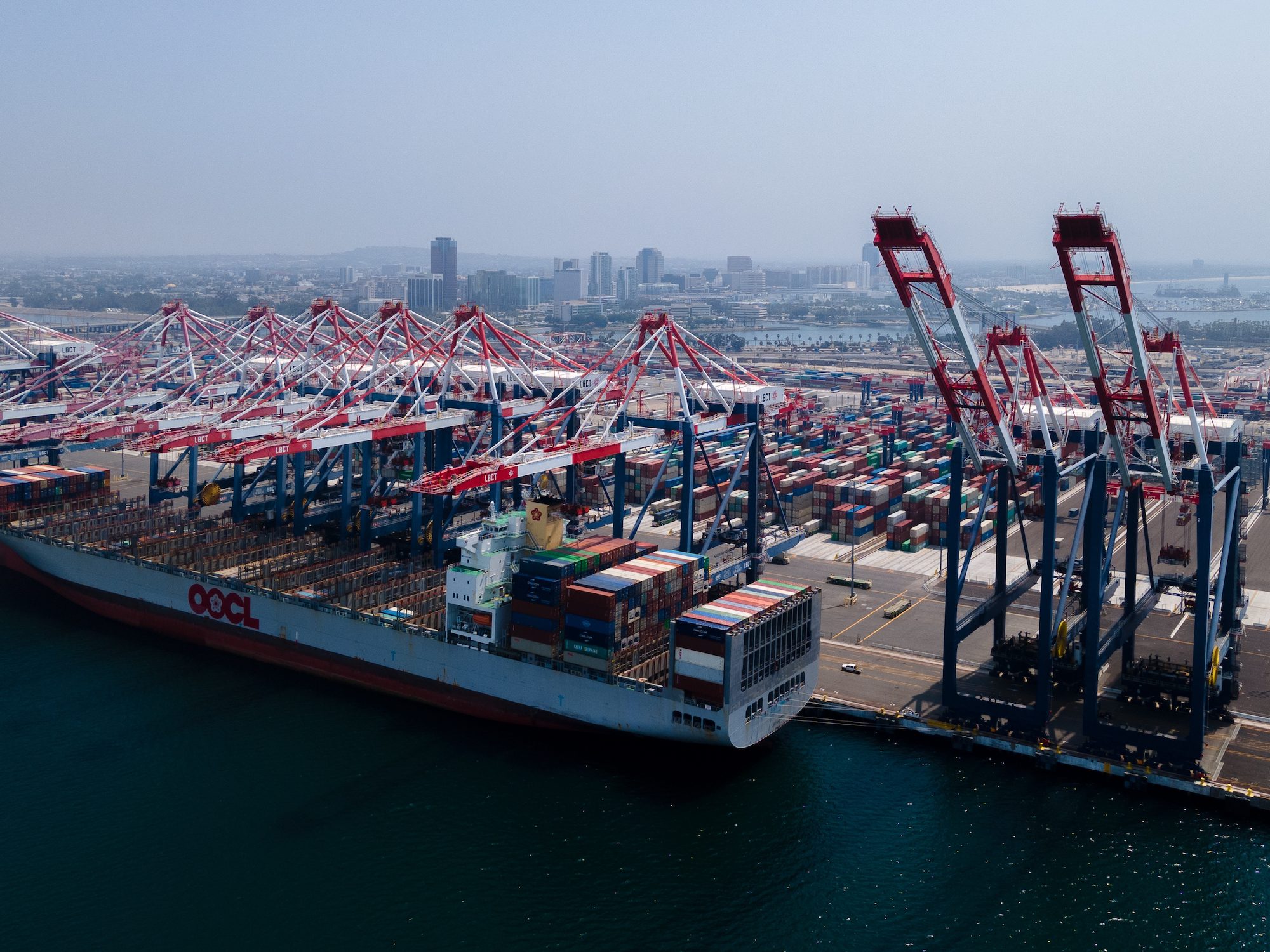U.S. container imports are expected to peak in August at a little over 2 million TEUs before slowly backing off, according to the National Retail Federation‘s Global Port Tracker report. This comes as retailers are closely watching labor disputes that could cause supply chain disruptions.
In May, U.S. ports saw an 8.5% increase in container imports from April, but a 19.3% decrease from the previous year, with 1.93 million TEUs handled.
The Global Port Tracker report projects June imports to be 1.86 million TEU, down 17.5% YoY and 3.6% from May. The first half of 2023 is expected to reach 10.6 million TEUs, down 22% from the same period in 2022. July is forecast at 1.94 million TEUs, down 11% year over year.
The NRF sees U.S. import cargo volume peaking in August at 2.03 million TEUs, which would would make it the highest monthly volume since last October, but down 10.1% YoY.
September is forecast at 1.96 million TEU, down 3.4%; October at 1.97 million TEU, down 1.8%, and November at 1.88 million TEU, up 5.9% for the first YoY increase since June 2022.
“These numbers together point toward another quarter of economic growth, which should confirm that the prospect of a recession is looking less likely,” said Ben Hackett, founder of Hackett Associates, which produces the Global Port Tracker for the NRF. According to Hackett, first-quarter GDP growth was revised upward to 2%, consumer demand is stable, and consumers continue to spend while retailers and wholesalers reduce their inventories.
While the NRF has yet to issue its full year forecast, Q3 imports are expected to total 5.9 million TEUs, an 8.3% decrease from last year, and the first nine months of the year will total 16.5 million TEUs, a 17.6% decrease YoY.
In 2022, imports totaled 25.5 million TEUs, a 1.2% decrease from the record of 25.8 million TEUs set in 2021.
Meanwhile, retailers are closely watching labor disputes at ports in western Canada and a potential Teamsters strike against United Parcel Service that could cause supply chain disruptions, the NRF said.
“We were relieved that labor and management at West Coast ports reached a tentative agreement last month but that doesn’t mean supply chain disruptions are over,” NRF Vice President for Supply Chain and Customs Policy Jonathan Gold said. “The port strike affecting Vancouver and Prince Rupert shouldn’t have a major impact here but could affect some U.S. retailers whose merchandise comes in through Canada and could have a potential ripple effect at other ports.”
The NRF notes that Canada’s Vancouver and Prince Rupert handled over 185,000 TEU in May, accounting for approximately 9% of combined U.S.-Canadian container imports at ports covered by the NRF’s full Global Port Tracker report.
“Meanwhile, the ability to move goods from U.S. ports to stores could be impacted if UPS and the Teamsters don’t resolve their differences before their contract expires at the end of the month. We urge all parties in both negotiations to get back to the table and continue efforts to reach a final deal without engaging in disruptive activity. Seamless supply chains are critical for retailers as we head into the peak shipping season for the winter holidays,” said Gold.

 Join The Club
Join The Club











